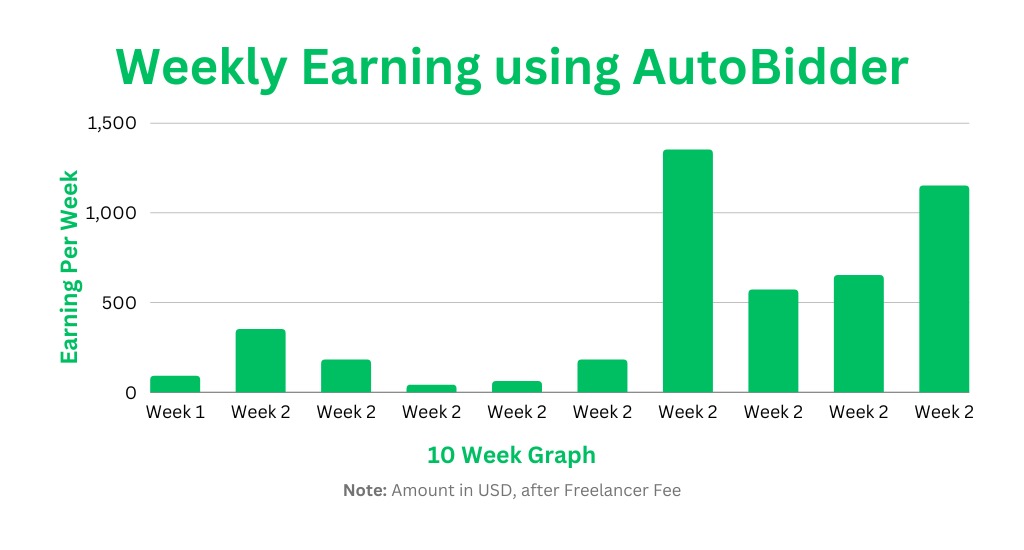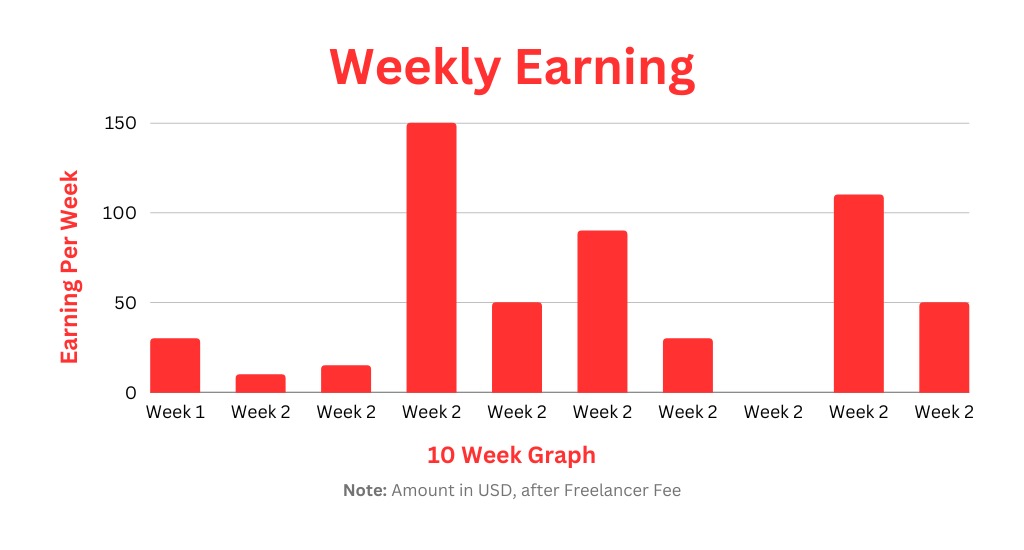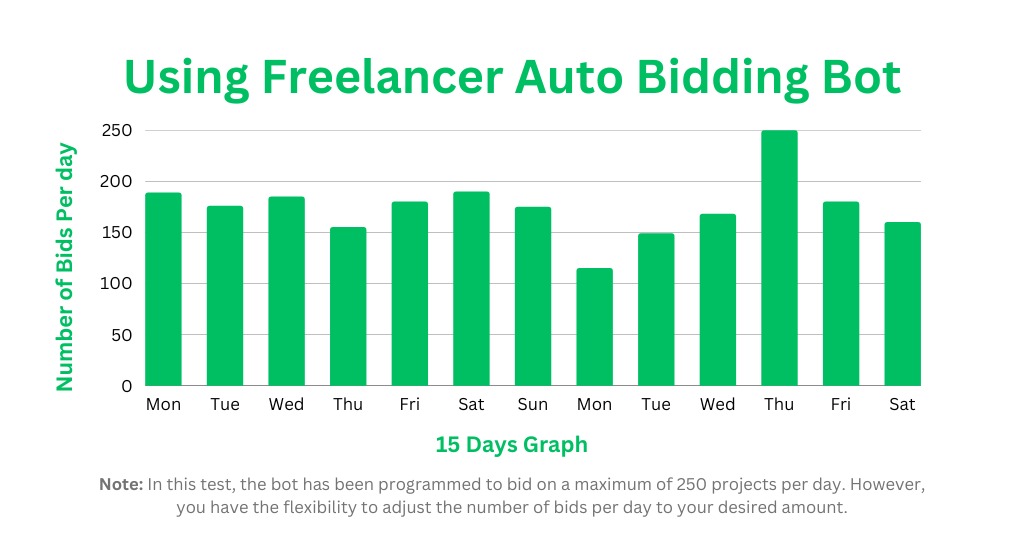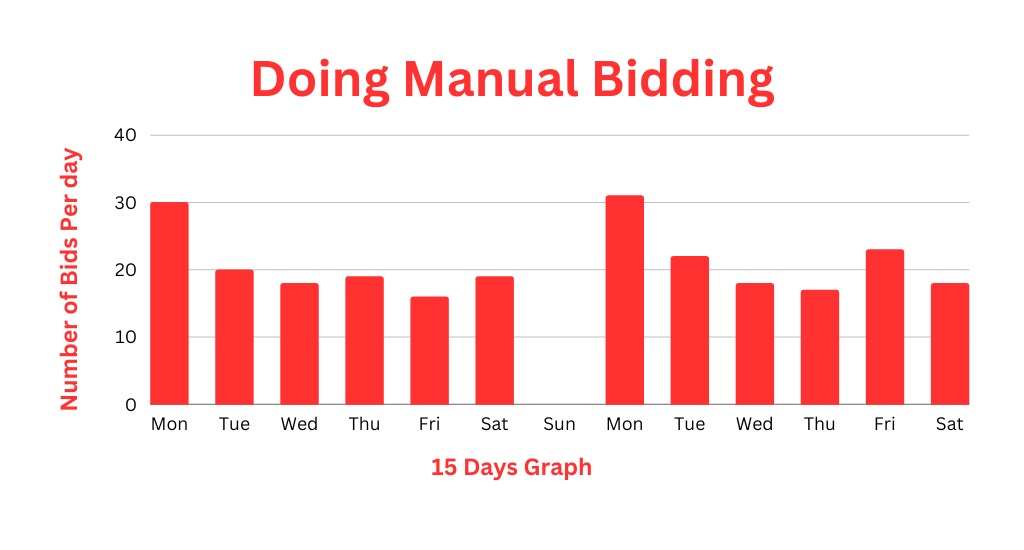
Freelance Auto Bidding vs Manual Bidding
Freelance bidding platforms have become popular in recent years as a means for freelancers to find processes and for clients to connect with skilled professionals. These platforms act as intermediaries, allowing clients to post job listings and freelancers to bid on those projects.
When it comes to summons on projects, there are two main approaches: auto summons and manual bidding. Each method has its pros and cons, and apprehension can help freelancers make informed decisions almost which to use.
Key points
- What is Freelance Auto Bidding?
- Pros of Freelance Auto Bidding
- Cons of Freelance Auto Bidding
- What is Manual Bidding
- Advantages Of Freelance Manual Bidding
- Disadvantages Of Freelance Manual Bidding
- Freelance Bidding Platforms
- Key Differences Between Auto Bidding And Manual Bidding
What is Freelance Auto Bidding?
Freelance auto bidding refers to a lineament offered by some freelance bidding platforms that allows freelancers to automate the summons process. Instead of manually reviewing and summons on a piece project, freelancers can set predefined parameters and criteria, and the program automatically submits bids on their behalf.
Concept of Freelance Auto Bidding:
The concept of free-lance auto bidding is to streamline the bidding process and save clips for freelancers. By background specific criteria and preferences, freelancers can instruct the platform to search for and bid on projects that jibe their requirements automatically.
This automation allows freelancers to bid on multiple projects simultaneously without the need for continuous manual involvement.
Step-by-Step Explanation of the Auto Bidding Process:
Parameters and Criteria Setting:
Freelancers start by configuring their auto bidding settings. They delineate the criteria and preferences for the projects they are interested in bidding on. These criteria can include factors such as project budget, job category, client ratings, project duration, or keywords in the project description.
Project Scanning:
Once the auto bidding settings are naturalized, the self-employed bidding platform scans the uncommitted projects listed on the program. It searches for projects that assemble the predefined criteria set by the freelancer.
Automated Bid Submission:
When the program identifies projects that coordinate with the freelancer’s criteria, it automatically submits bids on their behalf. The bid includes info such as the freelancer’s proposed rate, estimated timeline, relevant experience, and any additional details specified in the auto bidding settings.
Bidding Confirmation and Notifications:
After the program submits the bid, freelancers receive a confirmation or notification indicating that their bid has been successfully placed. This confirmation typically includes details really near the project, such as the client’s call, project title, and bid amount.
Client Evaluation and Selection:
The client reviews the bids received from quite various freelancers, including the auto bids. The client may evaluate the bids based on factors such as proposed rates, free-lance profiles, yesteryear work samples, or any additional information provided in the bid. The client so selects the independent they deem most suitable for the project.
Project Awarding:
If the freelancer’s auto bid is accepted by the client, they are notified that they have been awarded the project. The freelancer can then proceed with initiating discussions and negotiations with the client to finalize project details, such as milestones, deliverables, and timelines.
Non-Awarded Bids:
In cases where the freelancer’s auto bid is not accepted, the program typically sends a notification to inform them that the contrive has been awarded to another freelancer. The freelancer can then decide whether to revise their auto summons settings or manually review and bid on other projects.
Pros of Freelance Auto Bidding:
Time-saving:
Auto summons eliminates the need for freelancers to manually review and bid on each externalization individually. It saves time by automating the summons outgrowth, allowing freelancers to focus on other aspects of their work.
Increased bidding intensity:
With auto bidding, freelancers can bid on multiple projects simultaneously. This increases their chances of winning projects and helps them maintain a steady workflow and income.
Consistency:
Auto summons ensures that freelancers consistently bid on projects that meet their predefined criteria. It reduces the likeliness of summons on irrelevant or unsuitable projects, thus increasing the efficiency of their bidding strategy.
Scalability:
Auto bidding allows freelancers to exfoliate their byplay more easily by bidding on a larger figure of projects. They can expand their client pedestal and take on more work without existence limited by the time-consuming manual bidding process.
Cons of Freelance Auto Bidding:
Lack of personalization:
Auto bidding may terminate in generic bids that lack personalization. Since the summons process is automated, it can be challenging to tailor bids to an individual project and make them tie-up out among other freelancers.
Reduced control:
By relying on auto summons, freelancers give up some control over the bidding appendage. They may misfire opportunities or fail to describe projects that could be a really good fit due to the limitations of their predefined criteria.
Higher competition:
Auto bidding allows freelancers to bid on multiple projects simultaneously, increasing the competition among freelancers. This can lead to lower rates and more vivid contention for projects, potentially affecting profitability.
Risk of really uneven projects:
The automated nature of auto bidding may result in freelancers winning projects that are not an ideal fit for their skills or expertise. Without manually reviewing contrive details, freelancers may end up taking on projects that they are not well-suited for, leading to possible challenges or dissatisfied clients.
Impersonal communication:
Auto bidding may demarcate direct communication between freelancers and clients during the initial bidding phase. Personalized communication and negotiation can be crucial for edifying client relationships, savvy project requirements, and ensuring a mutual understanding.
What is Manual Bidding?
Manual summons in the context of self-employed work refers to the outgrowth of manually reviewing project listings and submitting individual bids based on the freelancer’s assessment of the project’s requirements, budget, and fit with their skills and have. Unlike auto bidding, manual bidding involves a more hands-on and personalized approach to the bidding process.
Concept of Freelance Manual Bidding:
The concept of manual summons revolves around the idea of carefully evaluating a piece project opportunity and tailoring a customized bid to showcase the freelancer’s skills, qualifications, and understanding of the client’s requirements.
Manual summons allows freelancers to have unmediated control over the summons process, enabling them to differentiate themselves from other bidders and increase their chances of winning projects.
How Manual Bidding Works:
Project Search and Review:
Freelancers hunt for available projects on freelance auto bidder bot summons platforms based on their interests, skills, and expertise. They manually review project details such as the project description, requirements, budget, deadlines, and any additional information provided by the client.
Bid Preparation:
After reviewing the project details, freelancers prepare their bids. They workmanship personalized proposals that address the specific needs outlined in the project description. The bid may include info about the freelancer’s relevant experience, past work samples, approach to the project, proposed timeline, and pricing details.
Bid Submission:
Once the bid is prepared, freelancers submit it directly to the client. Some freelance summons platforms provide a designated space or organizer where freelancers can participate in their bid details and submit it through the program. In other cases, freelancers may need to communicate with the client via email or other communication channels to submit their bid.
Communication and Negotiation:
After submitting the bid, freelancers may enlist in direct communication with the client. This communication can involve clarifying project details, discussing specific requirements, negotiating the terms, or addressing any questions the client may have. This interaction allows freelancers to build rapport, march their expertise, and further tailor their proposal to meet the client’s expectations.
Project Awarding:
The client evaluates the received bids, considering factors such as the freelancer’s qualifications, proposed rates, experience, and the quality of the bid itself. Based on their assessment, the client selects the freelance they believe is the best fit for the project and awards them the project.
Project Initiation:
Once awarded the throw, the free-lance and client proceed with finalizing project details, such as background milestones, agreeing on deliverables, establishing timelines, and discussing any other relevant specifics. This stage marks the offset of the existing proposed execution.
Advantages of Freelance Manual Bidding:
Personalization:
Manual bidding allows freelancers to tailor their bids to an individual project. They can customize their proposals to address the specific needs and requirements outlined by the client, showcasing their understanding of the project and increasing the chances of standing out among other bidders.
Better Project Assessment:
Manual summons involve a thorough refresh of externalized details, giving freelancers the opportunity to assess whether the project is a good fit for their skills, receive, and interests. This assessment helps freelancers make informed decisions nearly which projects to bid on, increasing the likelihood of successful project outcomes.
Opportunity for Negotiation:
Manual bidding often opens the door for unmediated communication and negotiation with clients. Freelancers can discuss projection specifics, budgets, timelines, and any other relevant factors. This interaction allows for a more nuanced understanding of the project and the potential to negotiate terms that work wellspring for both parties.
Building Client Relationships:
Through manual bidding, freelancers have the chance to establish personal connections with clients right from the bidding stage. Effective communication and demonstrating expertise in the bid can facilitate build trust and resonance with the client, potentially leading to long-term client relationships and repeat business.
Disadvantages of Freelance Manual Bidding:
Time-Consuming:
Manual bidding requires freelancers to invest time in reviewing project listings, apprehension requirements, and crafting customized proposals. It can be a time-consuming process, especially when bidding on multiple projects simultaneously.
Limited Bidding Volume:
Due to the manual nature of the process, freelancers may not be capable of bidding on as many projects simultaneously as they would with freelance auto bidder. This restriction may trim the number of opportunities usable to them compared to automated summons methods.
Inconsistent Bidding Strategy:
Manual summons relies on the freelancer’s judgment and decision-making. This can track inconsistencies in the types of projects chosen to bid on, potentially resulting in an uneven workflow or missed opportunities.
Competitive Environment:
Manual summons often involves competing with other freelancers for the same projects. This can increase the level of competition and make it more intriguing to secure projects or negotiate favorable terms.
Subjective Evaluation:
Manual summons relies on the client’s subjective valuation of bids, which can introduce biases or variations in the selection appendage. The client’s preferences, rendering of bids, or personal biases may influence their decision-making, potentially impacting the freelancer’s chances of winning projects.
Freelance Bidding Platforms
Freelance bidding platforms are online platforms that connect clients with freelancers, allowing clients to brand job listings and freelancers to bid on those projects.
These platforms serve as intermediaries, facilitating the process of finding and hiring freelancers for various types of projects.
Here are some popular freelance summons platforms:
Upwork:
Upwork is one of the largest and most well-known freelance bidding platforms. It offers a really wide range of job categories, including writing, plan, programming, marketing, and more. Upwork provides tools for projection management, communication, and untroubled payment processing.
Freelancer:
Freelancer is another pop free-lance summons platform that covers a broad reach of job categories. It allows clients to carry projects and invite bids from freelancers worldwide. Freelancer offers features such as milestone payments, dispute resolution, and collaboration tools.
Guru:
Guru is a freelance summons platform that focuses on proficient and creative projects. It provides a platform for clients to find freelancers in areas such as programming, design, penning, and marketing. Guru offers features like workroom quislingism, invoicing, and escrow payment protection.
Fiverr:
Fiverr is a program where freelancers offer services in various categories, typically at very fixed prices. While it operates on a quite different model compared to traditional bidding platforms, it easily provides a marketplace where clients can find freelancers for their projects.
Toptal:
Toptal is a curated freelance platform that specializes in connecting clients with top-tier freelancers. It focuses on high-quality talent in fields like package evolution, design, and finance. Toptal has a rigorous screening process to ensure the freelancers on the program meet high standards.
99designs:
99designs is a free-lance platform specifically for designers. It allows clients to run plan contests or directly hire designers for various plan projects such as logotype plan, web designing, and more. Designers can bow their work, and clients choose the design they prefer.
PeoplePerHour:
PeoplePerHour is a freelance program that caters to businesses of all sizes. It offers a wide range of categories, including design, writing, marketing, programming, and more. PeoplePerHour allows clients to post projects and freelancers to submit proposals or bid hour-based services.
Key Differences between Auto Bidding and Manual Bidding
There are several key differences between freelance auto bidder and manual summons in the circumstance of freelance act. Here are the briny distinctions:
Automation vs. Personalization:
Auto summons relies on machine-driven processes and predefined criteria to submit bids on behalf of freelancers. It is a more automated and standardized approach. In contrast, manual summons involve a personalized and hands-on approach, where freelancers review externalize details individually and craft customized proposals.
Time Efficiency:
Auto bidding is generally more time-efficient as it automates the bidding treat. Freelancers can bid on multiple projects simultaneously without the demand for uninterrupted manual involvement. Manual bidding, on the other hand, requires freelancers to invest time in reviewing project listings, understanding requirements, and crafting personalized bids.
Control o’er Bidding Process:
With auto bidding, freelancers give up some control over the bidding appendage as the platform automatically submits bids based on predefined criteria. Manual bidding provides freelancers with direct control o’er the intact bidding process, allowing them to make decisions based on their own judgment and assessment of project details.
Bidding Volume:
Auto bidding allows freelancers to bid on a higher volume of projects simultaneously since it automates the operation. Freelancers can cast a wider net and increase their chances of winning projects. Manual bidding may limit the number of projects freelancers can bid on due to the clip required for individual review and bid preparation.
Personalized Communication:
Manual bidding provides freelancers with the chance for direct communication and personalized interaction with clients during the summons outgrowth. They can ask questions, seek clarifications, and engage in negotiation. Auto summons, on the other hand, may get limited or impersonal communication channels during the initial bidding phase.
Flexibility and Adaptability:
Manual bidding offers more flexibility and adaptability as freelancers can sort their bids to the specific requirements and preferences of a piece cast. They can highlight their unique strengths, relevant experience, and expertise in a customized way. Auto summons relies on predefined criteria and may not allow for as much flexibility or customization in the bidding process.
Competition and Differentiation:
Auto bidding often leads to higher competition among freelancers as it allows them to bid on multiple projects simultaneously. This can result in a larger puddle of competitors, potentially impacting rates and making it more challenging to stand out.
Manual summons offers an opportunity for freelancers to differentiate themselves through personalized bids, unique proposals, and direct communication with clients.
Choosing the Right Bidding Approach:
Choosing the very right summons near, whether it’s auto summons, manual bidding, or a combination of both, depends on very various factors. Here are some considerations to help you make an informed decision:
Time Availability:
Assess your available time and workload. Auto bidding can be advantageous if you hold limited time to manually review and bid on projects. It allows you to bid on multiple projects simultaneously without extended manual involvement. However, if you have more time to dedicate to the bidding process, manual bidding provides greater control and customization.
Project Preferences:
Consider the types of projects you want to work on. If you get specific preferences or specialized skills, manual summons allows you to carefully choose projects that coordinate with your expertise and interests. Auto bidding may be suitable for more general projects where predefined criteria can still yield relevant opportunities.
Personalization and Differentiation:
If you believe that personalization and trim proposals are crucial for standing out among other freelancers, manual bidding is a better choice. It allows you to cunning customized bids, address specific project needs, and march your understanding of the client’s requirements. This can help you differentiate yourself from competitors.
Volume and Competition:
Evaluate the stratum of competition in your field and your ability to vie for projects. Auto bidding enables you to bid on a higher volume of projects simultaneously, increasing your chances of winning projects. However, keep in mind that increased competition may also impact rates and make it more challenging to secure projects. Manual summons may be beneficial for niche or less militant projects.
Client Interaction:
Consider the value of direct communication and edifice relationships with clients. Manual bidding allows for personalized communication during the bidding process, enabling you to ask questions, discuss cast details, and negotiate terms. If building client relationships is important to you, manual bidding offers more opportunities for direct interaction.
Experiment and Evaluate:
It’s often beneficial to experiment with both auto summons and manual bidding to see which attack workings topper for you. You can start with a combination of both methods and assess the results. Evaluate factors such as project success rates, client satisfaction, workload management, and boilersuit profitability to regulate the most effective summons coming for your freelance career.
Factors to Consider Automated bidder
When considering the use of an automated bidder for self-employed work, there are several factors to take into accounting. Here are some key considerations:
Bidding Platform Compatibility:
Ensure that the automated bidder you choose is compatible with the free-lance bidding platform you use. Different platforms may have varying features, requirements, and APIs. Confirm that the machine-controlled bidder supports the platform you intend to use for bidding.
Customization Options:
Evaluate the level of customization and flexibility offered by the automated bidder. Look for features that allow you to set specific criteria, preferences, and filters based on your skills, experience, rates, and externalize requirements. The more customizable the machine-controlled bidder is, the better it can align with your item-by-item needs.
Accuracy and Relevance:
Assess the power of the machine-controlled bidder to accurately identify and bid on relevant projects. It should have thinking, algorithms or mechanisms to match projects with your predefined criteria effectively. Look for a machine-driven bidder that minimizes the chances of bidding on irrelevant projects, as this helps optimize your bidding efforts.
Bidding Strategy Control:
Consider the level of control you have over the bidding strategy when using an automated bidder. It’s indispensable to have the power to adjust and fine-tune the parameters and criteria used for summons. The automated bidder should allow you to customize bidding strategies based on factors such as projection budget, job category, client ratings, or keywords.
Notification and Alert System:
Check if the automated bidder provides a notification and alert system to keep you informed well-nigh bid status, project updates, or other relevant information. Timely notifications can help you rest on top of the bidding treat and ensure you are aware of any changes or developments.
Data Security and Privacy:
Evaluate the data security and privacy measures implemented by the automated bidder. Since it may require access to your account and personal info, it’s important to ensure that the bidder has robust security protocols in place to protect your data from unauthorized access or breaches.
Performance and Reviews:
Research and assess the execution and reputation of the machine-driven bidder. Look for user reviews, testimonials, or case studies to understand how well it has performed for other freelancers. Consider factors such as bid success rates, accuracy in matching projects, and boilersuit user satisfaction.
Cost and Value:
Consider the cost of using the automated bidder and evaluate it in relation to the value it provides. Assess whether the benefits, such as time savings and increased bidding volume, outweigh the costs associated with using the machine-driven bidder. Compare different machine-controlled bidders in terms of features, functionality, and pricing to make an informed decision.
Conclusion
In ratiocination, choosing between automated bidding and manual bidding in a self-employed process depends on several factors, including time availability, project preferences, personalization, volume and competition, client interaction, and case-by-case goals.
Automated summons offers clip efficiency, increased bidding loudness, consistency, and scalability. It is beneficial for freelancers with limited clip and who are open to bidding on multiple projects simultaneously. However, it may deficiency personalization, control, and direct client interaction.
Manual summons allows for personalization, better project assessment, negotiation opportunities, and building client relationships. It is suited for freelancers who value customization, want to carefully select projects that align with their expertise, and aim to differentiate themselves through tailored proposals. However, manual bidding can be time-consuming and may limit the number of projects a free-lance can bid on.
Ultimately, it may be good to experiment with both approaches and find the rightful balance that works for you. Some freelancers may choose to combine auto bidding and manual bidding strategies to maximize their summons efforts. Assessing your priorities, workload, project requirements, and preferences will help you determine the most very good bidding approach for your self-employed career.







